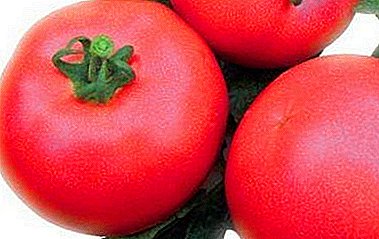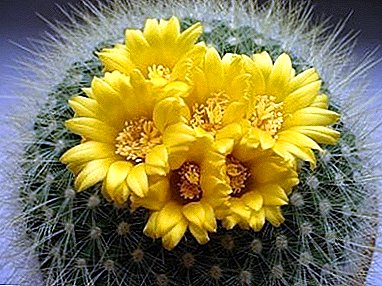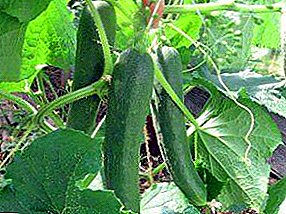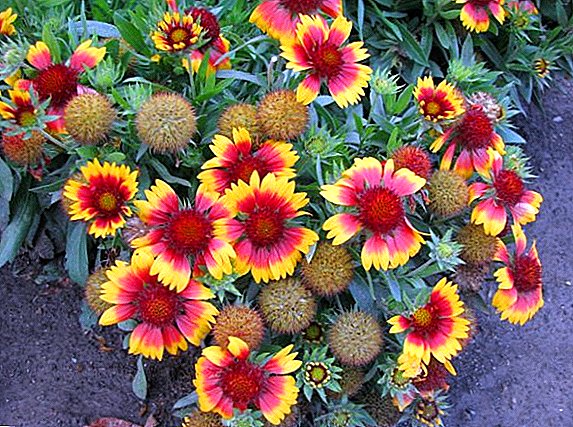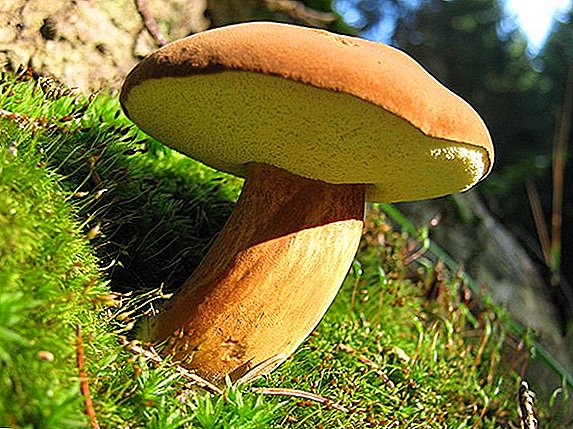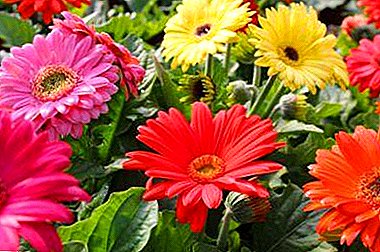
Garden gerbera refers to a perennial plant. This flower is considered whimsical. Without knowledge of planting and grooming it is not easy to grow it, because not all types of gerberas are suitable for cultivation in open field.
Today we consider in detail what conditions are needed for this flower for comfortable growth and flowering in a flower bed. Let's talk about how to properly care for plants and what difficulties may arise.
You will also learn what other gerbera-like flowers are grown in the garden. You can also watch a useful video on this topic.
Transvaal daisy in flowerbed
Gerbera has another name: Transvaal daisy, which belongs to the Asterisk flower family.. Its rare beauty flowers are often used when creating holiday bouquets. The height of the plant reaches 20-30 cm. Its thick leaves form a rosette, and between them there is a spike.
There are many varieties of gerberas. They differ:
- color;
- type of inflorescence;
- dimensions;
- double flower
Similar perennial flowers in the garden
 In nature, there are flowers that are similar to gerberas:
In nature, there are flowers that are similar to gerberas:
- chamomile;
- calendula;
- daisy;
- arktotis with its chamomile-like inflorescences;
- gatsania;
- osteospermum
Chrysanthemum is very similar, it has smaller flowers. There is a certain similarity of gerbera with a decorative sunflower.
Are all species can be grown in the country?
For cultivation in the open field is suitable for the whole variety spectrum, but most often planted tall species. These include the following varieties of gerbera:
- Rich and Romeo.
- Jamson and Daisy.
- Aldebaran and Abyssinian.
- Peter and Wright.
- Alcor and Delios.
- Mars.
No less suitable for open ground are varieties of pink gerberas, more about them can be found here, as well as orange gerberas, which can be found in this article.
Features of cultivation in the open ground
Flower demanding growing conditions. Colds have a destructive effect on him, because he needs heat and moisture.
In open ground, planting gerberas is necessary only after the ground becomes warm, and the threat of a return of frost will disappear.
Gardeners recommend planting these flowers next to tomatoes and eggplants, which belong to heat-loving crops. This is best done in late May and early June. At a later planting, they will bloom for a very short time.
Gerberas grow well in areas protected from drafts. For this most suitable place near the wall, solid fence or low elevation. You can build a flower garden in a shallow hole, but it should not accumulate water. Gerbera grows well on a gentle slope, especially in the middle of the hill.
The best place will be the one that the sun gets on during the day. Then the bushes grow powerful, and they will bloom profusely and large flowers. Gerberas grow slower if they lack sunlight.
Care
This flower is considered capricious and demanding. You need to know how to grow it and care for it.
Growing seedlings from seed
 For growing seedlings need to buy seeds in the store. Before purchasing, be sure to check the expiration date, their quality after they have been collected, lasts for 7 months. The planting procedure is carried out in early autumn. Experienced growers grow seedlings in this way all year round.
For growing seedlings need to buy seeds in the store. Before purchasing, be sure to check the expiration date, their quality after they have been collected, lasts for 7 months. The planting procedure is carried out in early autumn. Experienced growers grow seedlings in this way all year round.
Seeds are scattered in a container with prepared earth, sprinkling them with the same earth, then they are watered well. Top recommended to cover with plastic wrap.
We recommend to watch a video about growing gerbera seedlings from seeds:
Humidity and watering
Future seedlings should be regularly ventilated and sprayed with water.. Do not allow the soil to dry out. After a few weeks, the first shoots may appear. As soon as three leaves appear, the seedling can be planted in open ground. If he takes it there, it means that during the transplantation all the rules were followed. But in order to gerbera buds were born, and it bloomed, it is necessary to carry out a good watering. Water is taken from the separated, soft, room temperature.
Important: During watering it is impossible that it falls on the outlet or leaves. This can lead to decay of the root system. After the flower blooms, it is necessary to water less.
Temperature and lighting
For a gerbera, even a slight overcooling is destructive.. The best temperature is considered to be above 10 degrees. It is necessary to grow seedlings from seeds with diffuse moderate lighting, if it is good, then in the future the flower will bloom beautifully. Therefore, it needs planting in a place that is heated by sunlight. The stems of the plant without proper lighting are drawn out.
Soil and fertilizers
Seeds are planted in loose soil enriched with nutrients, which includes:
- leaf humus;
- peat;
- sand.
There you can add a bit of crushed pine bark. A drainage layer should be laid on the bottom of the pot.. The soil needs to be fertilized. She needs:
- phosphorus;
- potassium;
- magnesium;
- manganese.
Fertilizing with appropriate fertilizers is carried out 1 time in two weeks.
- Growing and breeding a flower at home.
- How to transplant gerbera after buying at home?
- Detailed instructions for planting and caring for gerberas at home.
- Important rules for the care of gerberas in pots.
- Gerbera of seeds at home.
- How to grow a gerbera?
Diseases and pests
 The most common disease of gerbera is rotting root collar.. This is due to moisture stagnation or as a result of the presence of fungus in contaminated soil. Need to properly water and improve drainage.
The most common disease of gerbera is rotting root collar.. This is due to moisture stagnation or as a result of the presence of fungus in contaminated soil. Need to properly water and improve drainage.
Excess moisture in the soil leads to the occurrence of gray rot, which is destroyed by special means. In very hot weather, powdery mildew can strike the gerbera. It is fought with the help of preparations containing sulfur, as well as fungicides.
Gerbera may die due to an attack on her:
- spider mite;
- thrips;
- aphids.
Their appearance is evidenced by yellowing and wilting of the flower. Special insecticides will come to the aid in the fight against pests.
Features care in summer and winter
Summer care is:
- systematic watering;
- regular soil loosening;
- fertilizer application;
- protection from pests and diseases.
For the winter, the garden gerbera must be covered; for this, dry leaves or straw are used.. In areas that are characterized by a harsh climate, this flower is grown as an annual, or it is dug together with a clod of earth, and planted in a large pot before spring. Put in a room with a temperature of 7-8 ° C, which is well lit and ventilated.
Division
The flower in the fall must be dug and transplanted into a wide pot, the diameter of which must be at least 20 cm. It is necessary that its size matches the size of the plant. Gerbera breeds by dividing the bush and seeds.
The simplest and most common is the first method. In this case, in April-May the bushes, which are already 2-3 years old, are divided into 5-7 parts. In each of them there should be 2-3 young leaves. If the length of the roots is more than 10-15 cm, then they must be cut. When planting young saplings, you need to look so that the socket is above the ground at a height of 1-1.5 cm. Otherwise, the plant will grow poorly.
Seeds are sown in the soil to a depth of 2-3 mm. Tanks with planted seeds are placed in places where direct sun rays do not fall. After 7-14 days, shoots will appear, after the formation of leaflets they are transplanted into pots.
How to plant and spread?
 When planting a garden gerbera region is necessarily taken into account. In those places where summer is hot and humid, and winter is warm, the plant will be perennial. In the winter months, it is enough just to hide it. In order for it to bloom as long as possible we must not forget about the nutrients. With their deficiency, the flowers become small. Water gerberas need only at the very root of the bush.
When planting a garden gerbera region is necessarily taken into account. In those places where summer is hot and humid, and winter is warm, the plant will be perennial. In the winter months, it is enough just to hide it. In order for it to bloom as long as possible we must not forget about the nutrients. With their deficiency, the flowers become small. Water gerberas need only at the very root of the bush.
There are certain rules how to arrange a gerbera. It is necessary to plant a flower only in a warm earth.
Seedlings must be removed very carefully so that the roots are not damaged. Each of them must have a good root, otherwise the flower will not take root.
How does he fall asleep and wake up?
Gerberas bloom for 3-4 months, after that they fall asleep. During this period, they accumulate strength for the upcoming flowering stage. Garden species that do not dig for the winter begin to bloom next year.
Conclusion
If you follow all the conditions of detention, such a magnificent flower as a garden gerbera, resembling a large chamomile, will gorgeous bloom throughout the summer. The garden will be filled with bright colors of these magnificent flowers.


